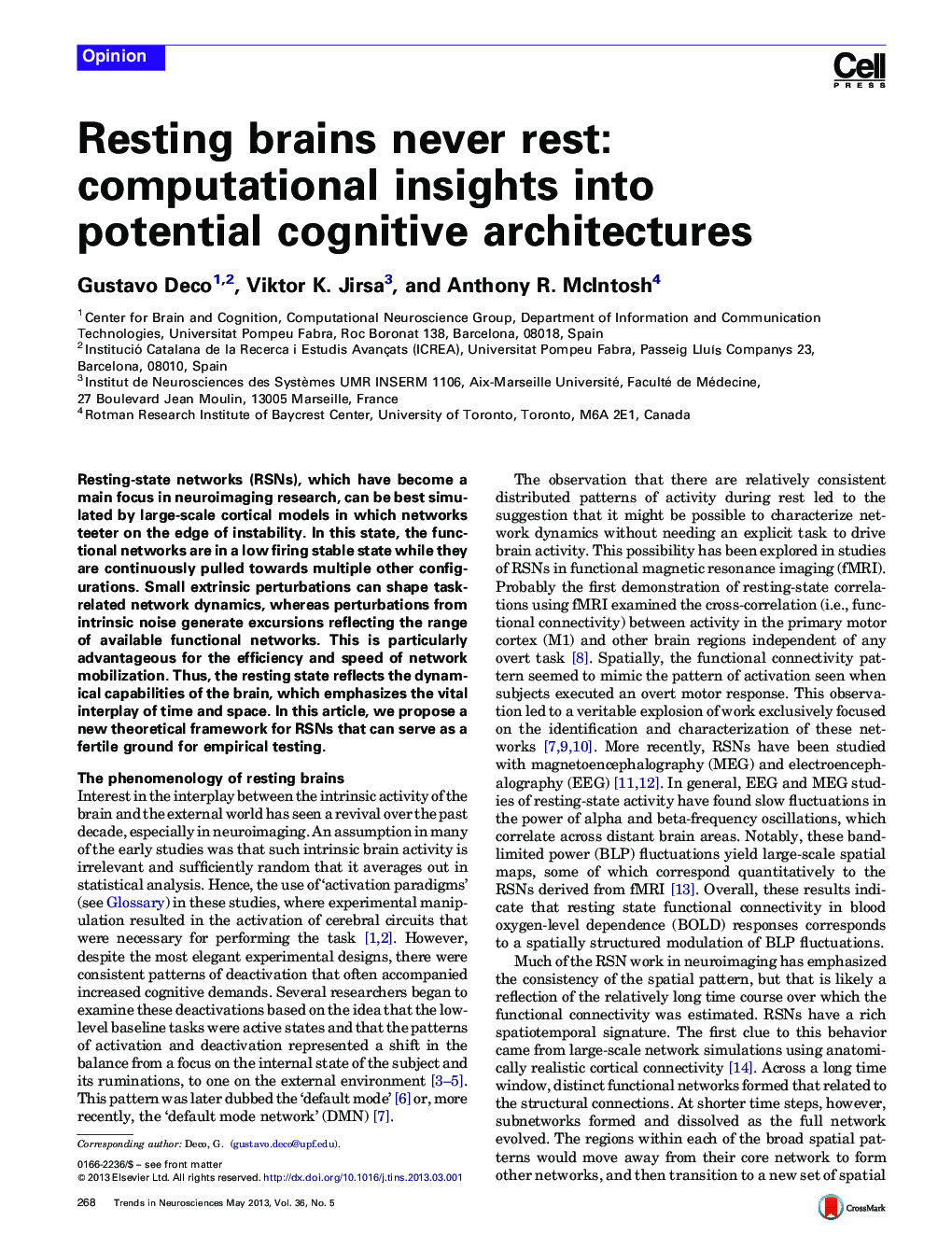| Article ID | Journal | Published Year | Pages | File Type |
|---|---|---|---|---|
| 4354318 | Trends in Neurosciences | 2013 | 7 Pages |
•During the normal waking state, the brain is in a constant state of internal exploration through the formation and dissolution of resting-state functional networks.•Based on large-scale computer models of the brain, the best fit to observed data comes when the networks are at the ‘edge of instability’.•Such a position is a distinct advantage for the efficiency and speed of network mobilization for perception and action.•We provide theoretical and empirical questions to better link resting-state networks to cognitive architectures.
Resting-state networks (RSNs), which have become a main focus in neuroimaging research, can be best simulated by large-scale cortical models in which networks teeter on the edge of instability. In this state, the functional networks are in a low firing stable state while they are continuously pulled towards multiple other configurations. Small extrinsic perturbations can shape task-related network dynamics, whereas perturbations from intrinsic noise generate excursions reflecting the range of available functional networks. This is particularly advantageous for the efficiency and speed of network mobilization. Thus, the resting state reflects the dynamical capabilities of the brain, which emphasizes the vital interplay of time and space. In this article, we propose a new theoretical framework for RSNs that can serve as a fertile ground for empirical testing.
